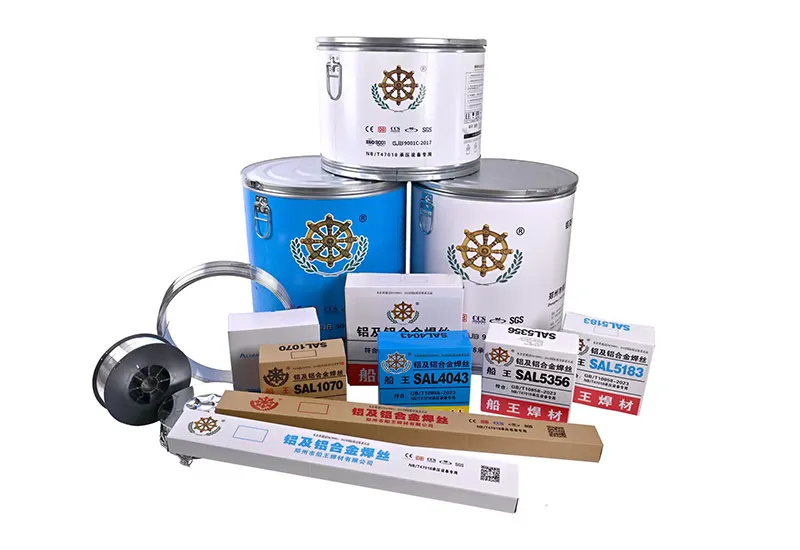
For over 35 years, we’ve been dedicated to producing high-quality aluminium welding wire in various alloy grades. Our product portfolio includes 1xxx pure aluminium wire, 3xxx aluminium-manganese, 4xxx aluminium-silicon, 5xxx aluminium-magnesium, and 6xxx/7xxx aluminium alloy welding wires, all designed for various industries including aluminium processing, rail transportation, petrochemicals, and construction.
We provide multiple packaging options to fit different welding processes and production needs, including spooled welding wire, straight welding rods, coiled wire without spool, and drum packaged welding wire.
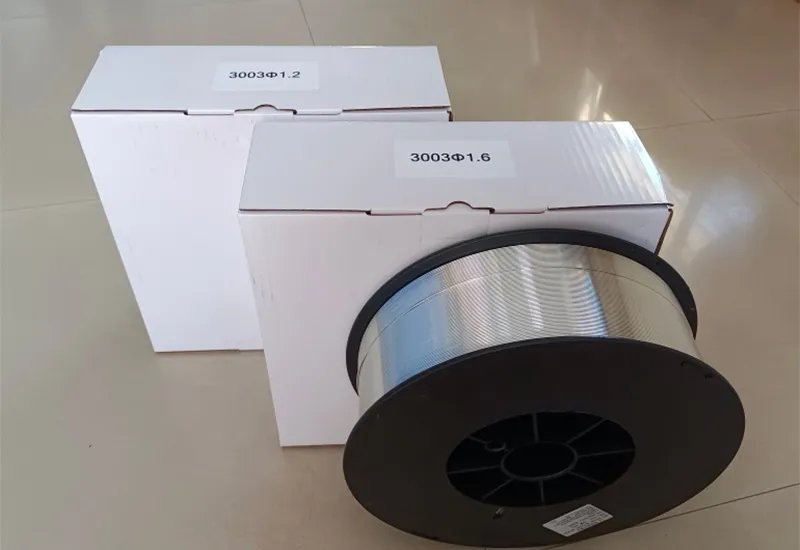 Spooled welding wire
Spooled welding wire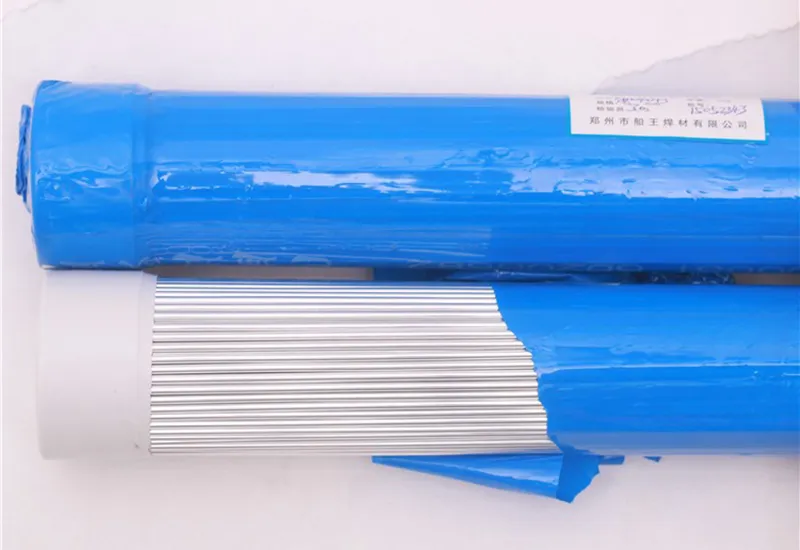 Straight welding wire
Straight welding wire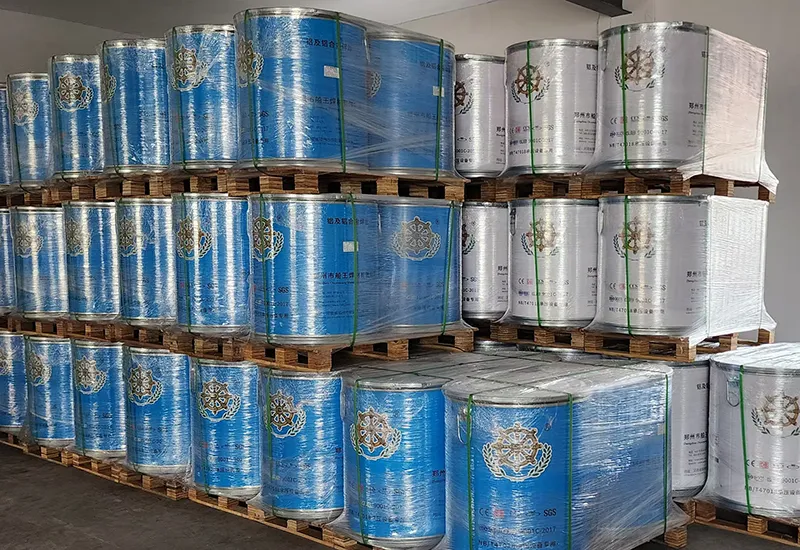 Drum packaged welding wire
Drum packaged welding wire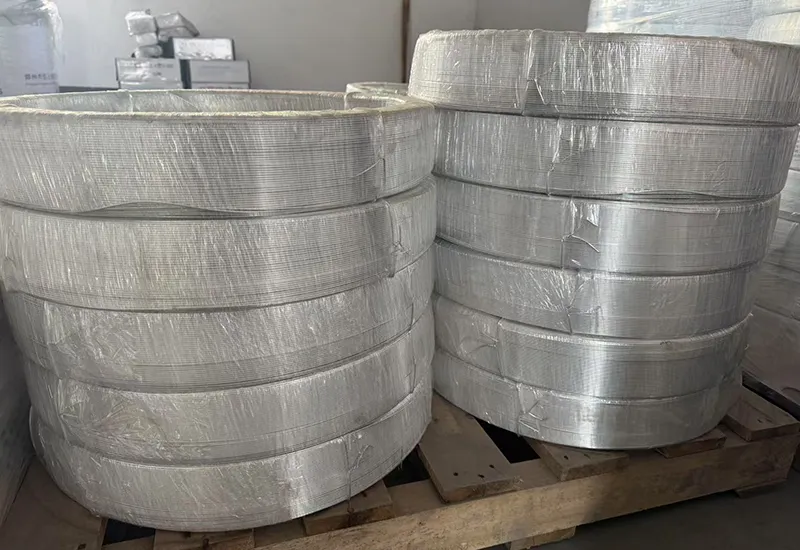 Coiled welding wire
Coiled welding wire 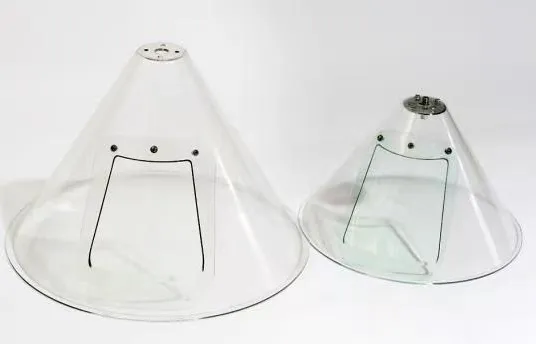
We launched its drum packaged aluminium welding wire in 2018 to meet the growing demand for robotic and automated welding. Along with the welding wire itself, we recommend a full set of compatible accessories, such as external hoods, wire feeding systems, and conduits, to ensure smooth setup and stable performance.
Unlike traditional spooled wire, drum packaging offers uninterrupted feeding, larger capacity, and no splice points. This helps reduce welding defects, improves bead consistency, and makes it easier to maintain quality during long or continuous welding operations. The result: lower production costs and improved efficiency for customers working in automated environments.
Use thinner wires (0.8mm–1.2mm) to better control heat input and reduce the risk of burn-through. MIG welding is recommended for more precise joints.
Wire diameters between 1.2mm and 1.6mm are suitable for ensuring enough deposited metal during welding. Both MIG and TIG welding are suitable, with MIG being more efficient for faster work.
Larger diameter wires (1.6mm–2.4mm) help ensure proper joint strength and weld integrity. TIG welding is commonly used to achieve clean and consistent results.
Wires from 2.4mm to 6.0mm support higher deposition rates for heavy-duty applications. TIG welding or multi-pass welding techniques are recommended to ensure full penetration.
For best results, select welding wire based on the thickness of the material, welding method, and required mechanical performance. This ensures better control, productivity, and weld quality.
ER1070 is recommended for materials like 1060 aluminium. It offers excellent electrical and thermal conductivity, which is ideal for welding pure aluminium.
ER4043 is suitable for 5xxx series such as 5052 and 5083, known for its good weldability and flow characteristics.
ER5183 is a better match for high-strength grades like 6061-T6, providing stronger welds.
ER4043 is a versatile option for 6xxx series, including 6061 and 6082.
ER5087 is used for materials like 6005A, 6082, and 5083, offering excellent resistance to cracking and porosity, along with strong mechanical properties.
ER5356 is often used for alloys such as 5052 and 5083, thanks to its corrosion resistance and solid mechanical performance.
When selecting welding wires, consider the alloy grade, material thickness, hardness, and the specific working environment. For harder alloys, ER5183 is a solid choice. For corrosion resistance and mechanical strength, ER5356 or ER5556 may be more suitable. Always match the welding wire to your actual welding needs to ensure strong, stable, and high-quality results.
When selecting aluminium welding wire, it's important to consider the base material composition, mechanical requirements, and working environment. Below is an overview of commonly used aluminium welding wires and their applications:
Among these, ER4043 and ER5356 are the most widely used options across a variety of industries.
Choosing the right aluminium welding wire involves multiple factors, such as the base metal composition, plate thickness, service environment, mechanical requirements, and any special conditions. Below are some detailed recommendations:
ER1070 and ER1100 wires are commonly used for welding pure aluminium and alloys that require good corrosion resistance and electrical conductivity.
ER4043 and ER4047 wires are ideal for welding aluminium-silicon alloys and grades with lower weldability. ER4043 is widely used for general welding; ER4047 offers better flow and higher silicon content.
ER5356 is suitable for welding aluminium-magnesium alloys and applications requiring higher strength and durability.
ER2319 is recommended for aluminium-copper alloys and high-strength aluminium grades.
If you have special requirements or urgent orders, delivery time and quantity can be discussed and adjusted accordingly.
We’re here to help you navigate our range of welding wires and rods and find the best fit for your application. Reach out anytime: sales@cwhj.com
Commonly used in the welding of battery trays for new energy vehicles.
In pressure vessel manufacturing, welding is an important process to ensure both safety and long-term durability.
Used for welding aluminium alloy components in rail vehicle bodies, meeting the demands for strength, durability...
Our welding wires are commonly used for welding aluminium alloy yachts and ships, primarily made from 5052 and 5083 aluminium plates.
Used in the welding of aluminium alloy structures for distillation towers, separation towers ...
Anode steel claws, also known as electrolytic claws, are crucial conductive components in aluminium production.